The skylark’s summer song is reduced in winter to spits of rage, each broken chirrup rendered to human ears as “get lost!” or something far ruder. Such angry chatter broke the stillness of a recent frost-becalmed morning in the fields. The strident cries told of an aerial dogfight.
Two skylarks among a flock of six had begun a chase-my-tail routine over a field of winter wheat. One showed quicksilver agility, banking, curving, twisting, very nearly skimming the blades of grass at ground level. Yet no matter how fast and adroitly it jinked and weaved, the pursuing bird held to its tail, maintaining a two-skylark-length distance between them, never closing, never lagging, seeming content with matching every turn of its harried opponent. I could catch you if I wanted, it seemed to say.
Then the purpose and fury seemed to dissolve in an instant and the protagonists blended back into the flock, tumbling and overlapping across the opposite field. One bird rose to the top of an arc above its fellows, spread its wings and gave a shivering half hover – a victory salute? Then the whole party spilled out of sight, folded into the furrows of a newly ploughed field, knitted invisibly into the landscape.
Up they rose again, this time condensing, shooting low over the path in a tight, disciplined formation – the brown Red Arrows. For a few seconds they kept closed ranks, then they began to separate, one individual showing the glint of a white tail feather, before they vanished once more.
A singleton shot out from the side of the path, and another straggle of birds rose from the next rectangle of ridged soil, space-hopping over the ground. It seemed as though the fields were shedding skylarks.
Science has demonstrated that each skylark needs to find the equivalent of 200 grains of wheat a day to survive cold weather, but here they were apparently frittering away their energy. Skylarks ascend, descend, turn swoops into loops.
For us, a winter’s day may not have the exhilaration of the skylark’s steepling song flight, but we still thrill to vignettes from this glorious show-off.
Follow Country diary on Twitter: @gdncountrydiary
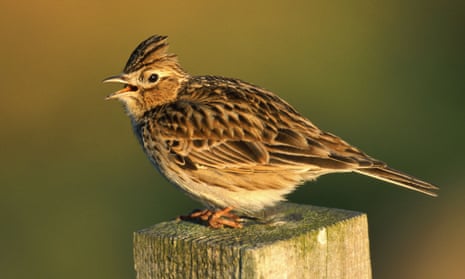
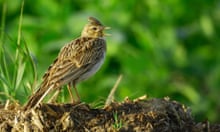

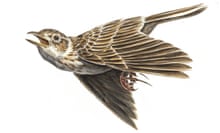
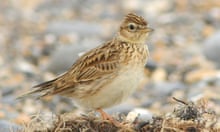
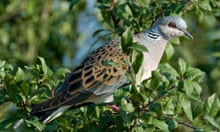
Comments (…)
Sign in or create your Guardian account to join the discussion